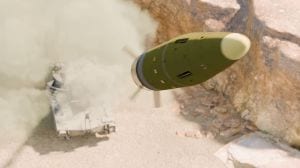Booming Re, withering exports
Realpolitik says the Government needs to step in. But warring factions for exporters in commerce and finance ministries only spell doom.

When the Bombay Stock Exchange tanked nearly 1,800 points in a single session last month, the Government took just 15 minutes to come up with a clarification on participatory notes. It is an example the exporting community never tires of narrating these days. Against the dollar, our dear currency has been appreciating for almost a year now, even as our neighbouring countries are making hay. Besides a much-hyped package for exporters last summer, the finance ministry cannot decide whether to step in or not. In a nutshell, this is the price one pays for being a democracy.
“We know that the exporters are hit hard and there is no denying the fact that a lot of growth, that has happened in the last decade, is led by exporters,” said a commerce ministry official. “There are differences within policy makers on the mode of action, but unlike some other countries, we as a responsible democracy, cannot even think of dual exchange rates.”
The Indian rupee has appreciated steeply with respect to the greenback in the last one year even as neighbouring currencies witnessed negligible change. Since October 2006, the domestic currency has risen 13.55 per cent, whereas the Chinese yuan has gained 5.03 per cent, Pakistan rupee has remained static and Bangladesh takka on the other hand has actually depreciated by 1.28 per cent.
While a lot has been written about how rupee appreciation threatens to take the wind out of the textile industry’s sails, the impact is being felt in other sectors as well. In agro and marine products, exports in rupee terms between April-September went down by 62.7 percentage points with an 83.52 per cent decline only in April. The auto components’ export too slumped 33 per cent during the same period. Machinery, witnessed a fall of about 11.6 per cent, while iron ore exports dented by 9 per cent in the first quarter. These sectors have a sizeable share in the overall export pie, which only accentuates the problem.
“The auto component industry is at a nascent stage and we are just making a mark on the global canvas. We have been caught up in a dual trap where high interest rates and rupee appreciation have completely squeezed our margins,” said Lumax Auto Technologies chairman and managing director D K Jain.
The textile industry on the other hand is in total disarray. “What kind of signals does the Government want to send? Sectors like textiles provide jobs to people in the lowest ladder. According to the RBI figures, our profitability is low at 6 per cent and with the rupee appreciating 13 per cent this year we are making losses,” said former chairman, Southern India Mills’ Association Manikam Ramaswami. “Is it not a reason enough for the Government to intervene?”
The industry is witnessing a grave recession with exports losing momentum after the initial hoopla of phase out of quotas. This year, on an average, exports have gone down by 34 per cent in rupee terms between April and September. It’s a mirror image in allied sectors like handicrafts. Exporters have reported 10-15 per cent decline in growth for 2007-08.
In times like these, the finance minister’s scathing attack on exporters last week elicited strong reactions. Chidambaram had asked the exporting community to live with low profits and learn to adjust with the appreciating rupee.
“We are not averse to a strong rupee, neither do we support exchange rate manipulation. But the global industry is ruthless and highly competitive and our taxation is not perfect. Considering the labour-intensity of the sector, the Government ought to do something, or approximately 5 lakh jobs would be lost by March 2008,” said Confederation of Indian Textile Industries secretary general D K Nair.
Textiles might be the first to get deflated but the industry fears that if nothing is done others will soon follow suit. “It took us three painstaking years (2002-2005) to bring the sector back on its feet but just eight months of mayhem and the clock has turned back four years,” said a textile ministry official. “The growth figures and export numbers are mere statistics, but the job losses would be more real.”





- 01
- 02
- 03
- 04
- 05


























